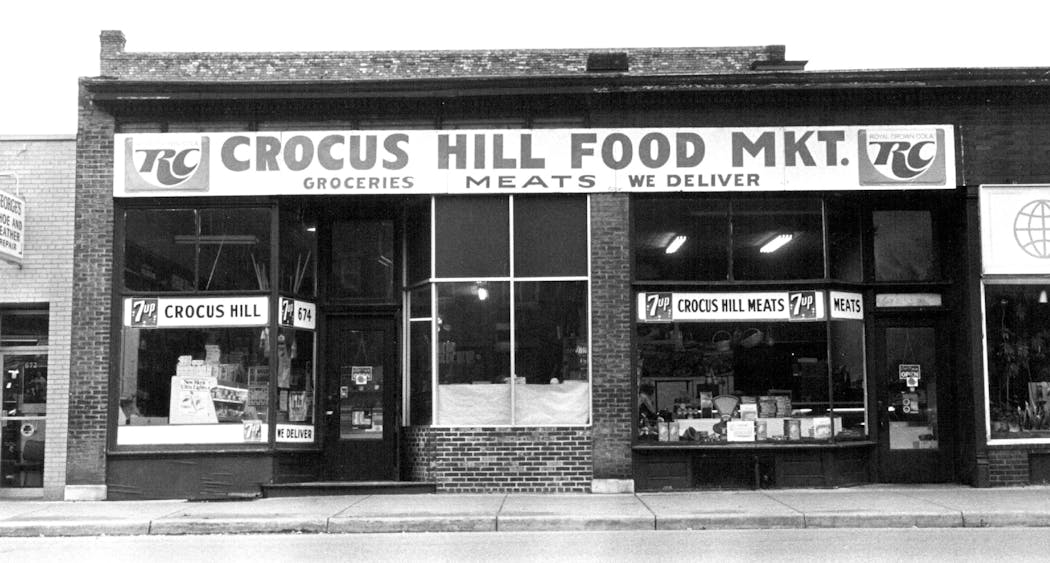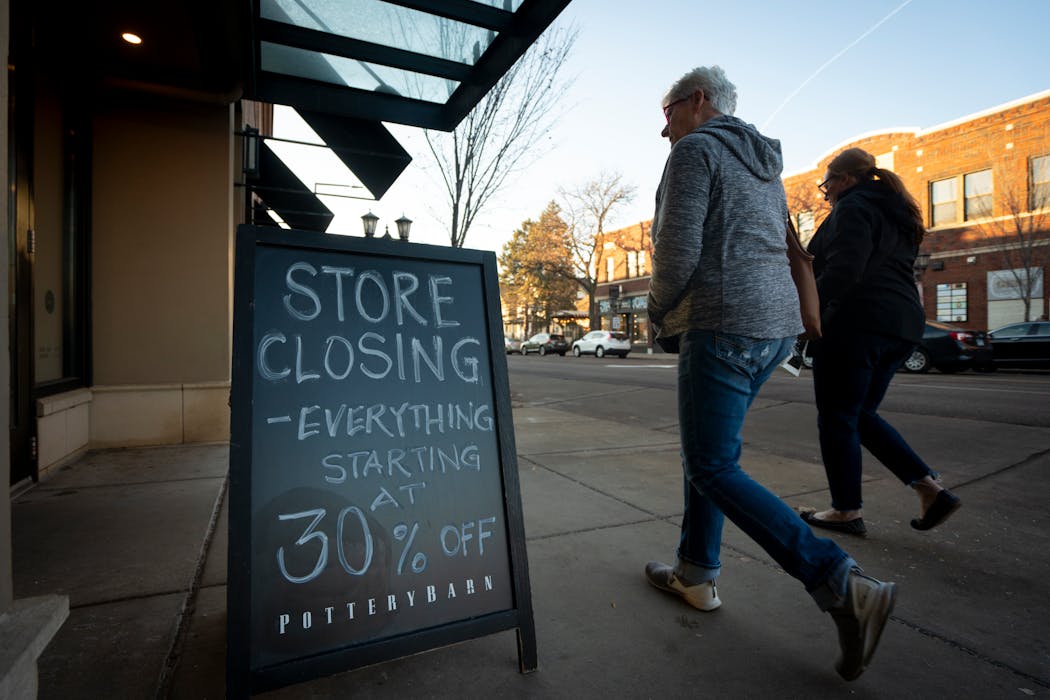St. Paul's Grand Avenue was bustling on a sunny weekday afternoon just before Christmas.
Pedestrians hauled shopping bags down the sidewalks, and the tunes of "Angels We Have Heard on High" and Dvořák's "New World Symphony" sounded above the hum of traffic from a trumpeter on the corner of Grand and Victoria.
The holiday bustle obscured the empty storefronts that dot the avenue. In recent years, St. Paul's prominent shopping street has lost one national retailer after another: J. Crew, Lululemon, LOFT, the North Face and Anthropologie. Pottery Barn, the furniture retailer that has anchored the same corner for years, will close in early 2024, as will Salut Bar Americain, a restaurant down the block.
Yet neighborhood boosters say the closures, while frustrating, are more a sign of a rapidly changing retail scene than a moribund Grand Avenue.
"People tend to think Grand Avenue is a sort of unchanging retail landscape that's now undergoing change and turnover for the first time," said Simon Taghioff, president of Summit Hill Association. But if you look at its history, he said, "Grand Avenue has been many things over its lifetime. I kind of see this as the latest reinvention — the latest 'what is Grand going to be? How is it going to remain relevant, given those underlying retail shifts?'"
Cars to boutiques
Grand Avenue didn't start out as the boutiquey shopping street it is today. For much of the 20th century, the 3-plus mile street served as a streetcar strip. Then, it became an auto row, with car dealerships, mechanics and other service-type stores, said David Lanegran, a professor emeritus of geography who for decades worked at Macalester College, along Grand Avenue, and has studied the avenue's history.
In the '50s and '60s, Grand and its surroundings saw demographic changes with white flight to the suburbs and the construction of Interstate 94, which displaced residents of St. Paul's historically Black neighborhood.
What came next was a crop of eclectic and locally owned stores and restaurants — many owned and run by women, Lanegran said.
"It became a model for street development elsewhere for these old streetcar strips, because it was successful without huge government investment," Lanegran said.
Then came efforts to promote Grand as an alternative to urban shopping centers, with a focus on walkability and small-scale entrepreneurs.
While some in the neighborhood long fought to keep chain stores out, others saw their eventual interest in the avenue as validation of the street's revitalization, according to Lanegran.
Closures follow national trends
Now those chain stores — especially those selling clothing and furniture — are falling victim to a national trend of moving toward regional malls, where there are more businesses like them, said Ari Parritz, a real estate developer involved in Kenton House on Grand, a luxury apartment building at the former site of Dixie's on Grand.
Shortly after clothing and home goods retailer Anthropologie closed its Grand Avenue store, for example, it opened one at Rosedale Center.
"I wasn't surprised that Pottery Barn left. It's very much a part of the trend that we've been seeing now for a number of years," Parritz said.
Another thing that frustrates locals is that many of the vacant spaces — seven out of 11, in that area of Grand Avenue — are owned by the State Teachers Retirement System of Ohio, a teacher's pension fund, said Chris Jensen, president of Grand Avenue Business Association. Both the Pottery Barn and Salut spaces are owned by the pension fund.
Taghioff said he and others involved in a Grand Avenue Working Group would like some clarity on why the spaces are sitting empty for so long. They hope to bring the landlord to the table to talk through filling them.
No representatives from the State Teachers Retirement System of Ohio, or Pottery Barn, responded to requests for comment for this story.
'We're all still here'
Business owners say the closures distract from what they see as a healthy commercial district. Jensen pointed out that after a three-year hiatus, neighborhood street party Grand Old Day reappeared in 2023.
"If we look at the avenue as a whole, I think you're seeing a decent amount of health and resilience," Taghioff said. "I think the success of the future for Grand is predicated upon really rotating towards this kind of experiential retail, dining kind of experiences that you can't otherwise get."
Amid the empty pension-owned retail spaces sits the Red Balloon Bookshop, a children's bookstore that's approaching 40 years on Grand Avenue. Owner Holly Weinkauf said the store is having a banner holiday season.
Weinkauf easily rattled off a list of decades-old Grand Avenue businesses, including Irish on Grand, Wet Paint and Cooks (formerly Cooks of Crocus Hill).
"We're all still here, and you know, doing well," she said, adding that new stores and restaurants have popped up all over. These include GoodThings, which took the space of the Bibelot Shop when its owner retired, clothing boutiques Enchanté and Garçon, plus Hyacinth, Em Quê Viêt and more.
Weinkauf said she senses the Pottery Barn closure has renewed enthusiasm to promote vitality on Grand Avenue — something she said started before the pandemic but paused in the urgency of those times.
"It's really helping focus a group of people who are very interested in 'OK so what conversations can we start having to help move those spaces into the next iteration,'" she said.
The timing is interesting, too, she said: She believes in the wake of the pandemic and the closure of so many beloved stores, more people recognize the importance of buying local.
"There's a difference between a shopping experience and just buying something," Weinkauf said. "When people come here, it's more about their experience."
Illustrating the point, she gestured toward a young boy showing off a puppet to an older couple who appeared to be strangers.
"Just these random interactions that happen," she said. "That's one of the things I love so much about about this."
Carolyn Parnell, 'trailblazer' who served as Minnesota's first IT commissioner, dies





